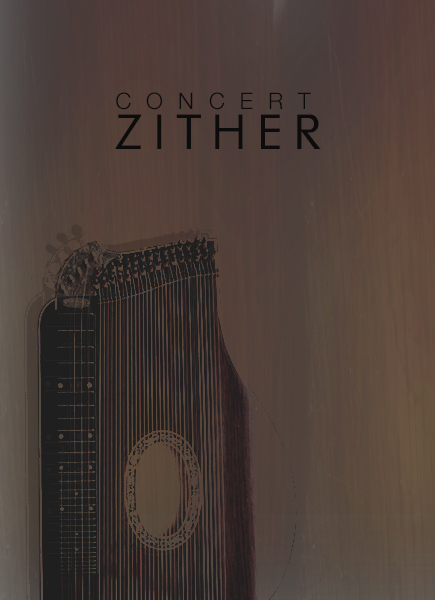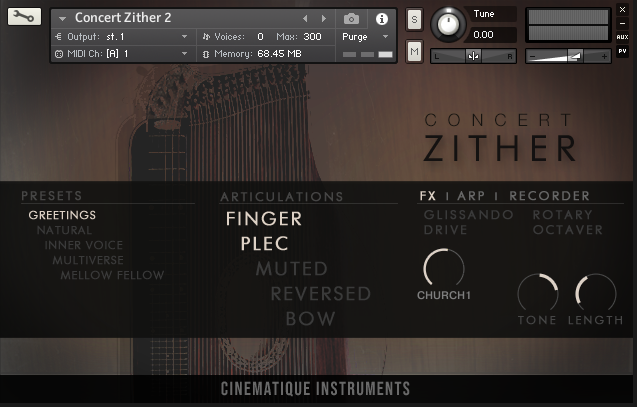The Concert Zither
The Zither is a stringed instrument, having many strings stretched across a thin, wooden soundbox. It is played by strumming or plucking the strings with fingers or a plec. The Zither is commonly found in Slovenia, Austria, Hungary, northwestern Croatia, and Germany's southern regions. The instrument became famous due to the charismatic central theme composed by Anton Karas for the 1949 film noir called "The Third Man".
The Zither instrument we are presenting is a Concert Zither. The strings are arranged as follows: 5 fretted melody strings, placed above a guitar-like fretboard, then 14 unfretted "accompaniment" strings; followed by 11 unfretted "bass" strings and finally 6 "contrabass" strings. The concert Zither has a rough and dirty sound often described as "mellow".
We handled the Concert Zither harshly: We plucked, stroked and strummed all the strings to get every possible sound, noise and articulation the Zither can produce. Finally, we assembled 5 different patches. Firstly there are two main patches with all 36 strings recorded in 4 round robin variations and several (up to four) dynamic layers. We additionally recorded the 31 accompaniment strings in a muted variation. In detail, you get five articulations: Finger, Plec, Muted, Reverse, and Bow.
These notes were recorded with two different microphones: a large-diaphragm condenser pair and a classic dynamic microphone. To shape the sound, we added a complex script to achieve many variations of the Concert Zither. Besides the principal complex patches, we provide another 4 useful FX patches: glissando (controlled by the mod-wheel), rotary, drive and an octaver. Here you find a great assortment of rare and exceptional FX string sounds.
Finally, we included an arpeggiator and a step sequencer to add even more possibilities to this instrument. The Concert Zither is a perfect supplement to all the other Cinematique Strings instruments: rare and unique.
Update:
With update 2.0, we now have a completely new instrument. Not only have we assembled all the individual nki files into one big instrument, but we also recorded a new "finger" articulation, added more features and gave everything a new design.
|


